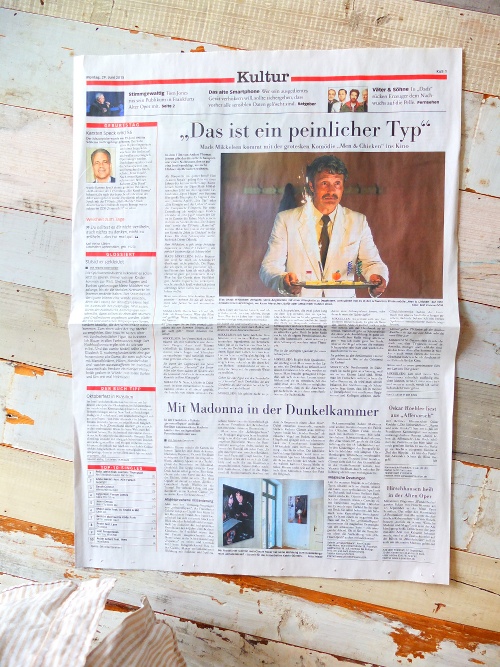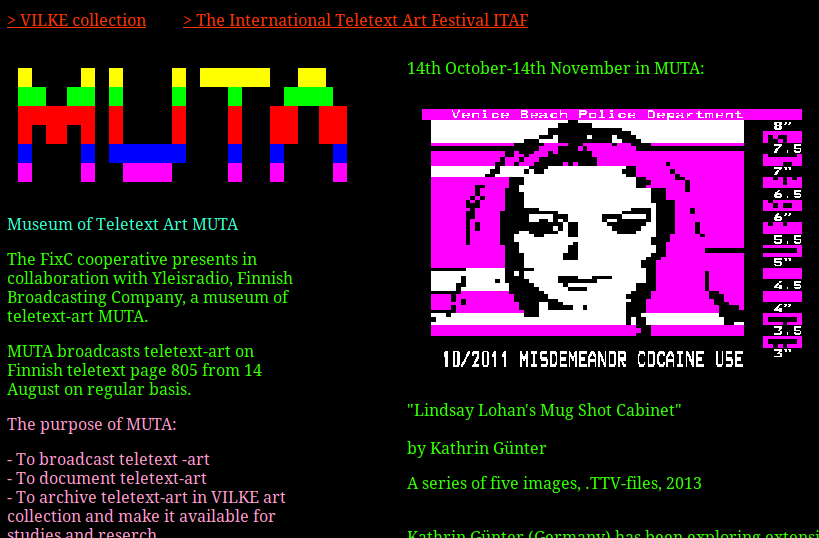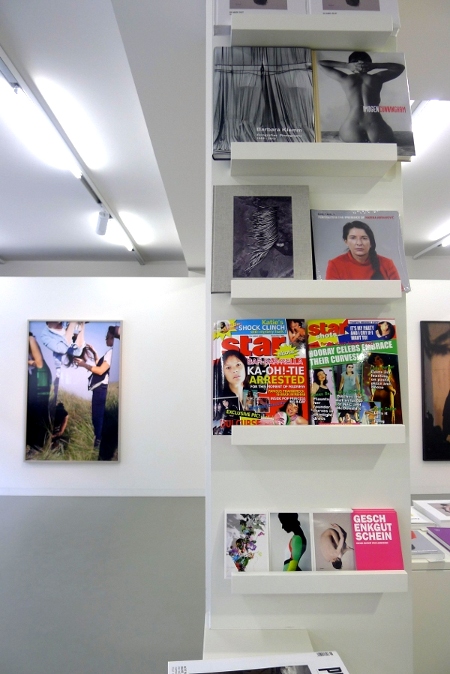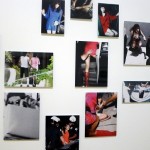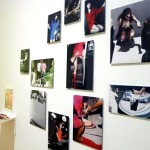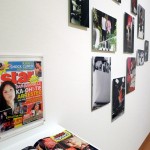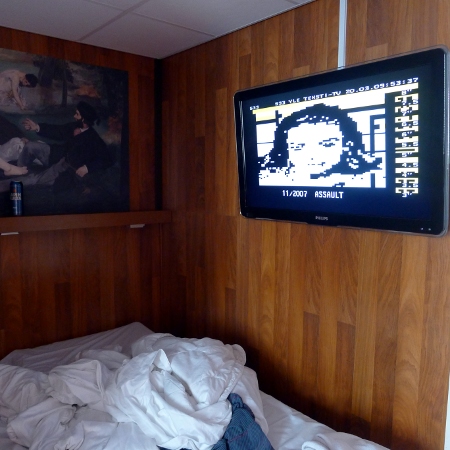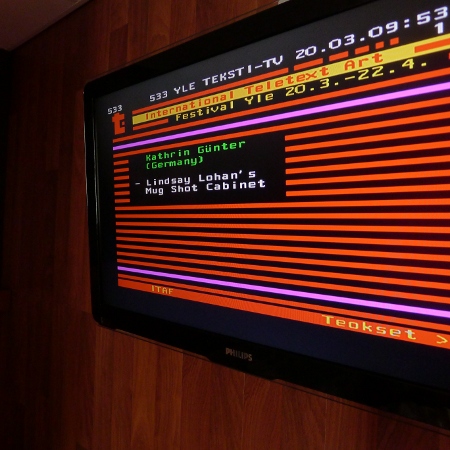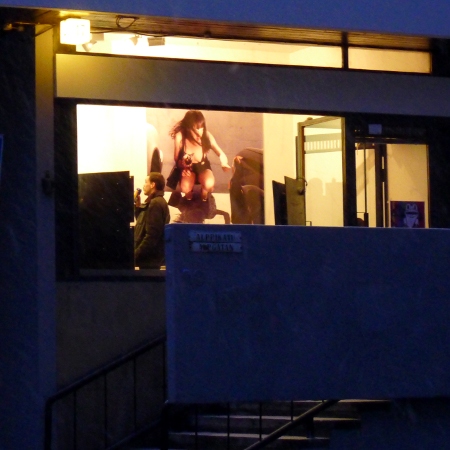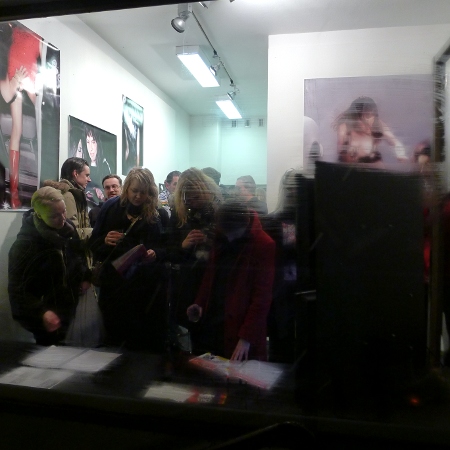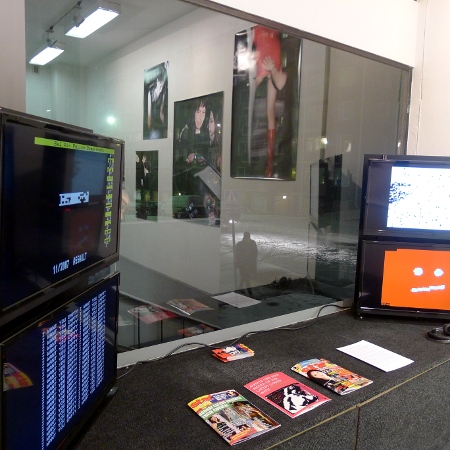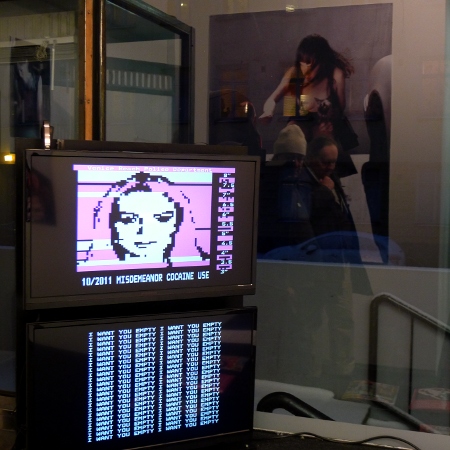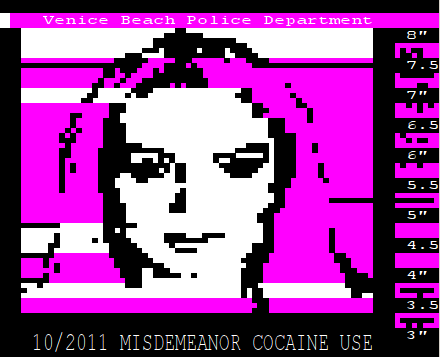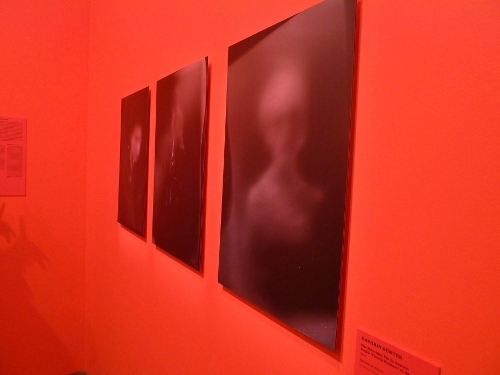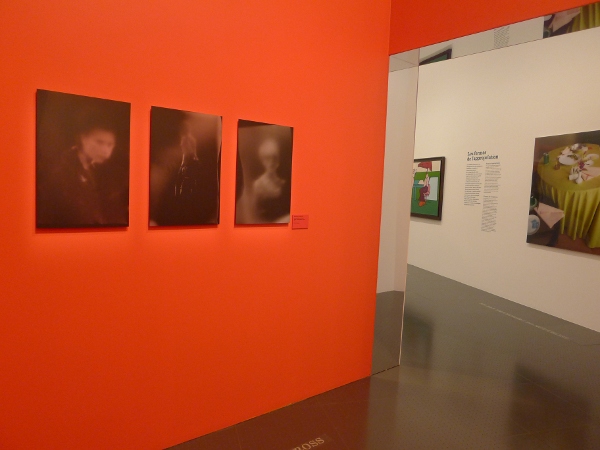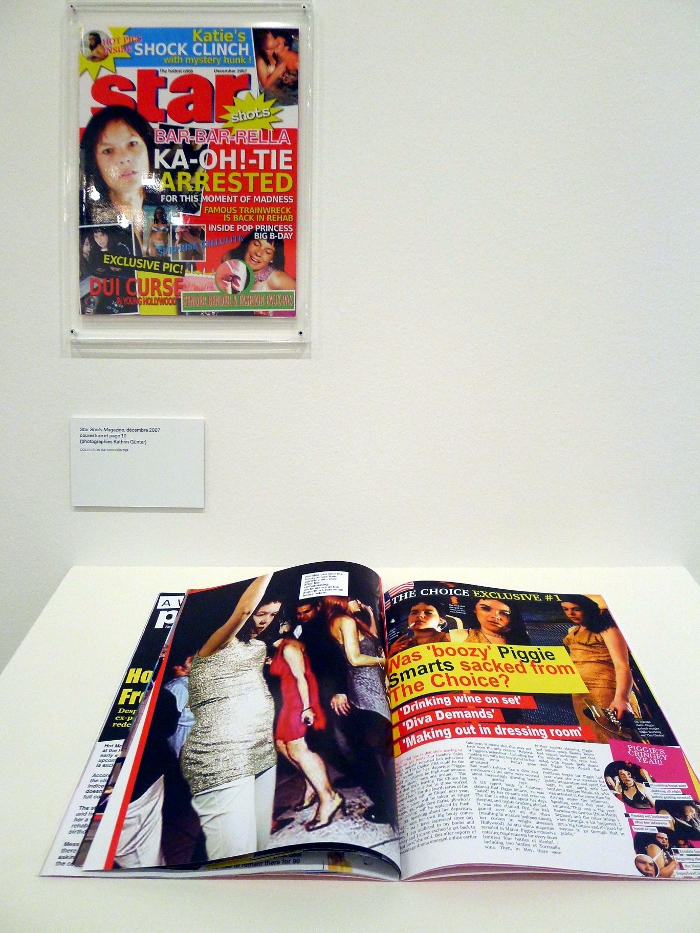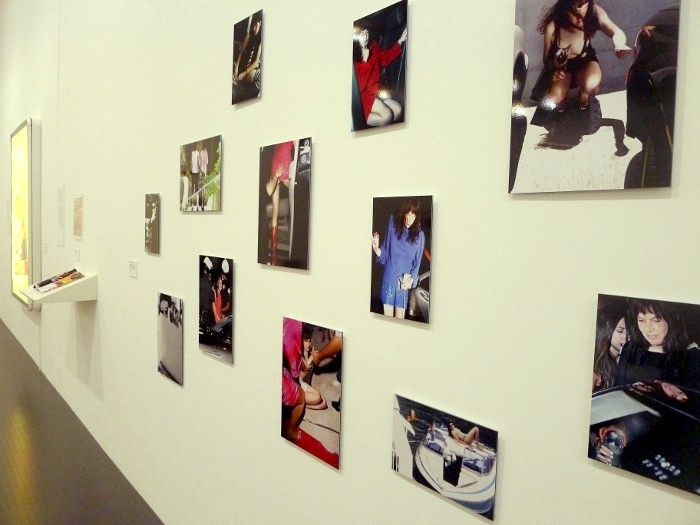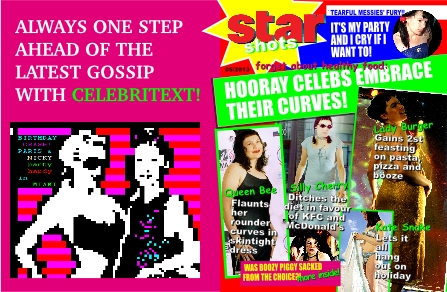Category Archives: star shots I
Katier shows at MUTA – Museum for Teletext Art 14.10.14 – 14.11.14
Star Shots Magazines at Fotografie Forum Frankfurt
Katier is very pleased to have her exclusive Star Shots Magazines on display in the beautiful new space of the Fotografie Forum Frankfurt! Thank you Celina!!
Katier shows: Paparazzi! Photographers, Stars and Artists at Schirn Kunsthalle
PAPARAZZI! FOTOGRAFEN, STARS UND KÜNSTLER
27. JUNI – 12. OKTOBER 2014
KONTAKT
SCHIRN KUNSTHALLE FRANKFURT
RÖMERBERG
60311 FRANKFURT
TEL 069.29 98 82-0
FAX 069.29 98 82-240
WELCOME (AT) SCHIRN.DE
Katier Shows: YLE – ITAF at FISH, Helsinki 20.03. – 22.04.2014
Katier Shows: YLE and FISH – Helsinki 20.03. – 22.04.2014
A Television Interview with YLE (in finnish) can be read here.
Katier Shows: 20.3.-22.4.2014 in Yle Teletext and FISH Helsinki
INTERNATIONAL TELETEXT ART FESTIVAL ITAF Yle
WELCOME TO THE OPENING of ITAF Yle:
>>>> exhibition by Kathrin Günter and
>>>> the founding event of MUTA (MUSEUM OF Teletext Art).
The artist is present in the opening.
Further information scroll down, or click here:
Thursday 20.3.2014 8pm at FISH Helsinki, Alppikatu 17 lh2 Helsinki
INTERNATIONAL TELETEXT ART FESTIVAL ITAF Yle
“Any sufficiently advanced technology is indistinguishable from magic.”
Arthur C. Clarke
20.3.-22.4.2014
in Yle Teletext and FISH Helsinki
The FixC cooperative organises together with Yleisradio, Finnish Broadcasting Company, a festival of teletext-art ITAF Yle. The artworks are broadcasted 20.3. – 22.4.2014. on Finnish teletext (pages 525 – 541).
The festival program includes an exhibition of works by Kathrin Günter, the winner of Teletext Art Prize2013 and a video compillation of ITAF Yle teletext-art works with a soundtrack by Uli Mayr including “Das Atom im Videotextreich” by Dragan Espenschied’s Eurodance band, Bodenständig 2000. The exhibiton takes place in the brand new FixC coopertive showroom: FISH Helsinki.
The ITAF Yle opening event also celebrates the founding of the world’s first and propably last teletext art museum MUTA (MUseum of Teletext Art). The museum will show artworks on a regular basis on a permamnet teletext page in Yle Teletext. In addition the museum will archive the teletext artworks in digital form for the media-archeologists of the future as part of the collection of Finnish electronic art VILKE.
The teletext art works in ITAF Yle have been previously shown in ITAF2013 in ARD text, ORF TELETEXT and SWISS TELETEXT. In one month over a million people viewed the artworks and following the success ITAF2013 was selected in to the program of Ars Electronica Festival , Linz, Austria, 5.9.-9.9.2013
The participating artists in ITAF Yle are :
LIA, Manuel Knapp, UBERMORGEN, Daniel Egg, Marc Lee, Raquel Meyers, Kathrin Günter, Max Capacity, Dragan Espenschied, Jarkko Räsänen, Goto80, Seppo Renvall , Dan Farrimond, Juha van Ingen, Cordula Ditz and John Lawrence.
The opening continues 10pm with a ITAF lo-tech teletext art videomix acompanied by chiptune music played by Jarkko Räsänen in Sandron kulma Kolmas linja 17
Katier shows: Paparazzi! Photographers, Stars and Artists 26.03 – 09.06.2014 – Centre Pompidou-Metz
Paparazzi! Photographers, stars and artists
Centre Pompidou-Metz dedicates an unprecedented exhibition to the phenomenon and aesthetic of paparazzi photography through more than 600 works (photography, painting, video, sculpture, installation, etc.).
The exhibition is divided into three parts: Photographers, Stars and Artists.
RED CARPET (INTRODUCTION)
The visitor steps into the exhibition space to be immediately confronted with paparazzi flashes from an installation by Malachi Farrell, titled Interview (Paparazzi). Photographs showing a pack of paparazzi “hunting their prey” create a mise en abyme that plunges the visitor into a new role as a star, while giving them a taste of the pressure celebrities are under.
PHOTOGRAPHERS
A profession
The profession of paparazzo is more complex than it seems. Paparazzi must be ingenious, mounting what are often delicate, high-risk operations. They each have their tricks of the trade and tales to tell which together form the grand story of “paparazzism”.
In a series of interviews with paparazzi, a presentation of their tools (including spy cameras, long lenses and disguises), photographs by Francis Apesteguy, Olivier Mirguet, Jessica Dimmock and Christophe Beauregard, and an excerpt from Raymond Depardon’s Reporters film, this section goes behind-the-scenes of the paparazzi.
Myths
The figure of the paparazzo was invented by Federico Fellini in 1960. The name is a contraction of “pappataci” (mosquitoes) and “ragazzi” (ruffians). The paparazzo is portrayed as a post-modern anti-hero. Since La Dolce Vita, he has become one of the mythical figures of popular culture.
Excerpts from films by Dario Argento, Federico Fellini, Brian De Palma, Louis Malle and Andrzej Zulawski, from the 1930s to the present, reveal the public’s perception of the paparazzo as a solitary figure, often down on his luck. Devoid of morals or scruples, and therefore hard to love, he is the double negative of the war correspondent.
STARSUnder scrutiny The other side |
ARTISTSForms of appropriation Through the paparazzo’s lens |
|
| NEWSSTAND (CONCLUSION) Celebrity magazines satisfy the demand of a media industry which has its own rhetoric and its own, unmistakable page layout. Through works by Jonathan Horowitz, Armin Linke, Paul McCarthy and Andy Warhol, this last section raises the question of how paparazzi photos reach their audience. |
Celebrity Retail Therapy? Star Shop ’til you drop’ is online NOW
Welcome to Katier’s Star Shop ’til you drop’:
… til you drop!
Magazines, Books and Posters. Have a look inside and enjoy!
Katier presents: Star Shots Magazines
Katier is very happy to have been invited by infamous occulto magazine to join their desk at MISS READ – The Berlin Art Book Fair from 19th – 22th of September! Two new editions of my freshly printed Star Shots Magazines and my self are looking forward to meeting you at the occulto magazine desk!
THANK YOU OCCULTO!!!
MISS READ will be hosted by abc – art berlin contemporary for the second year, after taking place at KW Institute for Contemporary Art for the previous three years.
Location:
abc art berlin contemporary
Luckenwalder Strasse 4-6
10963, Berlin
Germany
Opening hours
Thursday, 19.9.2013, 12-9pm
Friday, 20.9.2013, 12–7 pm
Saturday, 21.9.2013, 12–7 pm
Sunday, 22.9.2013, 12–7 pm
Free Entry

